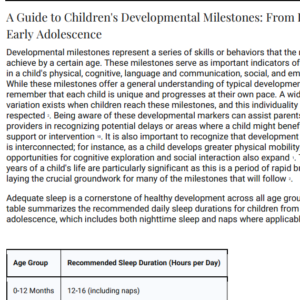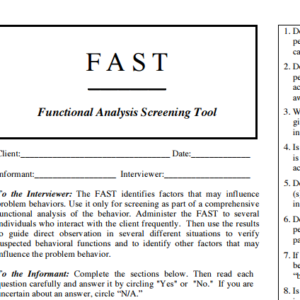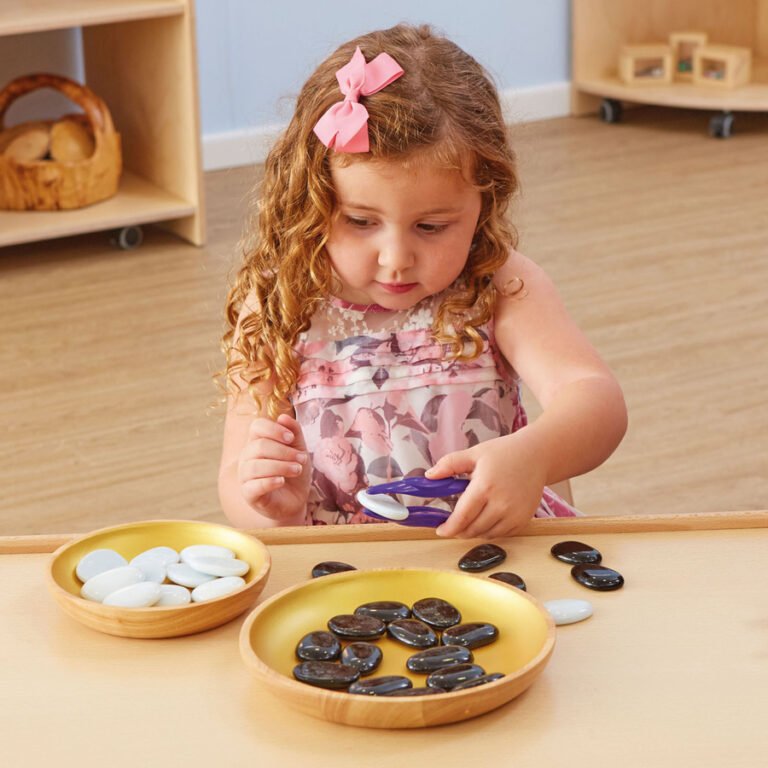
Okay, let’s dive into this! That feeling when you see a note from school in your child’s backpack… your heart might sink a little, or maybe a wave of frustration washes over you, especially if it’s vague. “Timmy wasn’t behaving today.” Okay… and? What does that mean? As a father and a Registered Behavioral Technician (RBT) with years of experience working with families and schools, I get it. Those notes can feel like a dead end, but I’m here to tell you they can actually be a doorway. A doorway to understanding, collaboration, and real solutions for your child.
Instead of letting frustration take the lead, let’s reframe this. That note isn’t just a complaint; it’s a signal. It’s an invitation (even if it doesn’t feel like one!) to become part of a team focused on your child’s success. The key is to transform this into an opportunity to gather crucial information about your child’s behavior: the when, the how, and most importantly, the why.
Let’s turn those dreaded school behavior notes into a powerful tool for teamwork and positive change!
That Dreaded Note: More Than Just “Bad Behavior”
First things first, take a breath. It’s so easy to jump to conclusions or feel defensive when you get a note about your child’s behavior. You might worry about what the teacher thinks, or if your child is being “that kid.” But here’s the thing: behavior is communication. Often, when a child is “misbehaving,” they’re trying to tell us something they can’t express with words.
That little piece of paper is a starting point, a breadcrumb. It’s not the whole story, and it certainly doesn’t define your child or your parenting. The most crucial first step? Don’t assume. Instead, get curious.
Becoming a Behavior Detective: The First Step is Asking WHY
In Applied Behavior Analysis (ABA), we operate on the fundamental principle that all behavior serves a purpose. Kids don’t just “misbehave” for the sake of it. There’s a function behind it. Are they trying to get something (like attention, a preferred toy, or an activity)? Or are they trying to avoid or escape something (like a difficult task, a noisy environment, or social interaction)?
Understanding this “why” is like finding the key to a puzzle. And those school behavior notes, as frustratingly vague as they can sometimes be, are your first clue.
Beyond the Note: Questions to Ask the School
So, the note says, “Sarah was disruptive during circle time.” Instead of just nodding and hoping for the best tomorrow, it’s time to put on your detective hat. Here are some crucial questions to ask the teacher to get a clearer picture:
- The “Before” (Antecedent): “Can you tell me what was happening right before Sarah became disruptive?” (e.g., Was it a specific activity? Were other kids close by? Was it loud?)
- The “Behavior” (Specifics): “When you say ‘disruptive,’ what exactly did that look like? Can you describe it for me?” (e.g., Was she talking out, getting up from her spot, touching others, making noises?) The more specific, the better! “Not behaving” isn’t a behavior; “throwing crayons” is.
- The “After” (Consequence): “What happened immediately after she was disruptive?” (e.g., Was she spoken to? Moved to a different spot? Did she get attention from peers? Was the task removed?)
- Patterns & Context:
- “When and where does this behavior seem to happen most often? Are there times or situations where it doesn’t happen?”
- “Who is usually present when this occurs?”
- “Roughly how often is this happening? And how long does an episode typically last?”
Getting answers to these questions helps you and the school start seeing the bigger picture. It’s not about assigning blame; it’s about gathering facts.
Introducing Your Secret Weapon: ABC Data
Now, let’s talk about a super handy tool that behavior analysts use all the time: ABC data. It sounds technical, but it’s actually pretty simple and incredibly insightful.
- A = Antecedent: What happens right before the behavior occurs? (The trigger, the setting, the demand)
- B = Behavior: The specific, observable action. (What did the child do?)
- C = Consequence: What happens immediately after the behavior? (What did the child get or get out of? How did others react?)
Collecting ABC data helps us spot patterns. For example, if you notice that every time your child is asked to do a math worksheet (A), they rip the paper (B), and then they’re sent to a quiet corner (C – escaping the task), you’ve just uncovered a potential function: task avoidance!
Social Engagement: Let’s Try a Mini-Experiment!
Want to see the power of ABC data in action? Try this: Pick one behavior your child engages in that you’re curious about (it could be at home or something the school has mentioned). For the next two or three times it happens, quickly jot down the A (what was happening right before), the B (what your child did), and the C (what happened right after). What do you notice? Are there any patterns emerging? What do you think the C is telling you about why the B is happening? Share your “aha!” moments or questions in the comments below! It’s amazing what you can uncover.
Making ABC Data Work for You and the School Team
You don’t need to be a BCBA to use ABC data. You can explain this simple A-B-C framework to your child’s teacher and suggest collecting this information together. It can be as simple as a shared note or a very basic chart. When the school sees you’re interested in a problem-solving approach, rather than just reacting to school behavior notes, it often opens the door for better collaboration.
Focus on that teamwork aspect: “Could we try to jot down the A-B-Cs for a few days when this happens? It might help us see if there’s a pattern.”
From Data to Action: Advocating for Your Child
Once you and the school have some ABC data (even if it’s just for a few occurrences), you’re in a much better position to understand the why behind the behavior. This is when you can start advocating more effectively for your child.
If the behavior is persistent, significantly impacting their learning or the learning of others, or causing distress, it might be time to discuss a more formal behavior evaluation at school. Sometimes, schools will conduct what’s called a Functional Behavior Assessment (FBA). This is a more in-depth process, often carried out by a school psychologist or behavior specialist, to determine the function of the behavior by collecting various types of data, including direct observation and ABC data.
What is a Behavior Intervention Plan (BIP)? And Why Your Child Might Need One
If an FBA is conducted and a clear function is identified, the next step is often to develop a Behavior Intervention Plan (BIP). Think of a BIP as a roadmap specifically designed to help your child learn more appropriate ways to get their needs met. It’s a proactive plan, not a reactive punishment list.
A good behavior intervention plan school teams develop will typically include:
- Proactive Strategies: Ways to change the environment or antecedents to prevent the behavior from happening in the first place. (e.g., giving warnings before transitions, breaking down tasks, providing choices).
- Teaching Replacement Behaviors: Identifying a more acceptable behavior that serves the same function as the challenging one, and then actively teaching your child that new skill. (e.g., if a child rips paper to escape a task, teach them to ask for a break).
- Reinforcement Systems: Clear ways to reward and encourage the replacement behavior and other positive behaviors. This is crucial! We all work better when we know there’s a payoff for doing the right thing.
- Reactive Strategies: What to do if the challenging behavior does occur, with a focus on safety and minimizing reinforcement for the problem behavior.
The beauty of a BIP is that it’s tailored to your child’s specific needs and the specific function of their behavior. It’s about teaching and supporting, not just trying to stop a behavior.
Building a Bridge: Tips for Effective Parent-Teacher Collaboration
Transforming those school behavior notes from a source of stress into a catalyst for teamwork hinges on strong parent-teacher collaboration. Here are a few tips:
- Assume Positive Intent: Believe that the teacher and school staff want what’s best for your child, even if their communication style isn’t perfect.
- Schedule Regular Check-ins: Don’t wait for a problem note. Try to establish brief, positive communication channels. A quick email saying, “How was Alex’s day today?” can go a long way.
- Share Successes: If you’re working on something at home and it’s going well, let the teacher know! And ask them to share small wins from school too.
- Be Open to Suggestions: Listen to what the school is observing. They see your child in a different environment. Try their suggestions with an open mind.
- Be a Team Player: Offer to help in ways that are feasible for you. Let them know you’re on their side.
- Focus on the Common Goal: You both want your child to be happy, learning, and successful at school. Keep that shared goal at the forefront of your conversations.
Remember, You’re Not Alone (And Neither is Your Child!)
It can be isolating and disheartening to constantly hear about your child’s challenges at school. Please know you’re not alone. Many parents navigate this. And remember, challenging behavior doesn’t make your child “bad,” nor does it make you a “bad parent.”
Especially for our neurodiverse kids, understanding their unique sensory needs, communication styles, and learning profiles is key. Behavior is often a direct result of a mismatch between the child’s needs and the environment or expectations.
By shifting your perspective on school behavior notes, arming yourself with tools like ABC data, and fostering a collaborative spirit with the school, you can turn these challenging moments into opportunities for growth and support for your child. You are their best advocate!
What are your biggest challenges or successes when it comes to school behavior notes? Have you tried using ABC data or been part of creating a BIP? Share your experiences and questions in the comments below!
For more resources on understanding child behavior, ABA principles, and supporting your child’s journey, explore the wealth of information available here at https://www.tbtb.life








